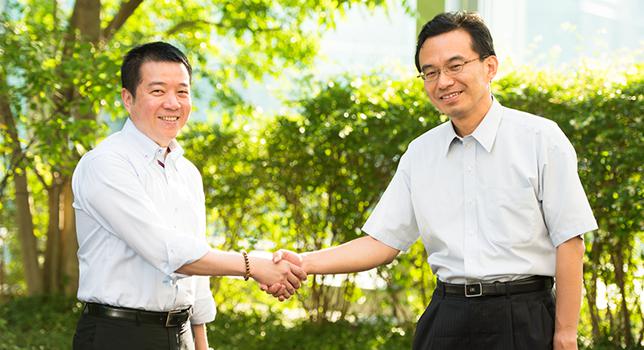2018.01.26Our Partners
Toward an Effective Public-Private Partnerships: UNDP Representative Office in Japan
2013.10.01 Our Partners
In Myanmar, the solar lanterns are used at temple schools for poor children. Yoshio Iwaki, the Vice-President of the Greater Mekong Initiative, which supports such schools, told us about the results and future outlook of the project. (July 16, 2013)
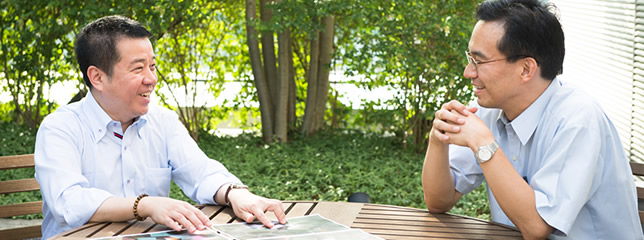
Iwaki : The Greater Mekong Initiative (GMI) is an organization established in November 2006 to help create a future for the young people in the Greater Mekong Sub-region. We are particularly active in supporting "temple schools" (schools run by the temples) for children who cannot attend public schools. There are as many as 2000 temple schools throughout Myanmar. Some of these are roofed open spaces without walls, whereas others have the classes in the corner space of the priest's living room, so the facilities are far from decent. We at GMI construct school buildings and provide the ongoing support necessary to run the schools. In 7 years we have constructed a total of 20 schools.
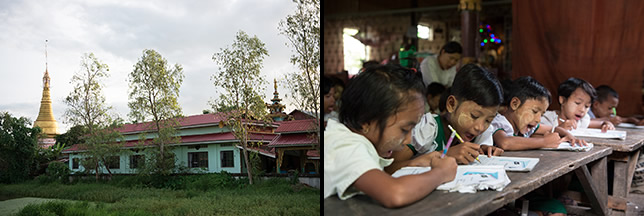
Left: A temple school supported by GMI. / Right: A class at a temple school
Hoshi : What is the current situation of the solar lanterns' distribution?
Iwaki : Ms. Akie Abe, the honorary adviser of GMI, and the wife of the current Prime Minister, visited Myanmar on May 25 and 26. A presentation ceremony was held and the lights were distributed to two convent schools. Many nuns live at the convent, and they use the lights when studying at night. The nuns at one of the convents also take on sewing jobs and they are considering using them during this work. We plan to finish distributing the rest of the lights to temple schools in August.
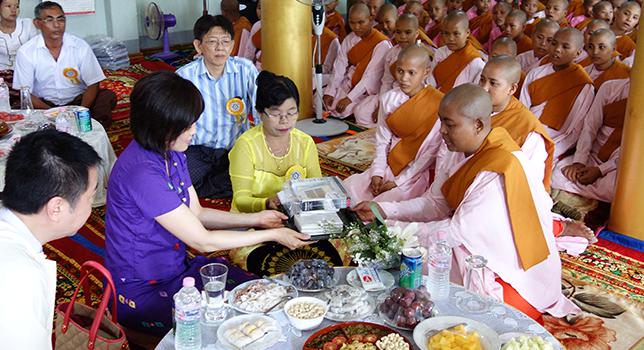
The ceremony at which Ms. Akie Abe presented lanterns to a convent school.
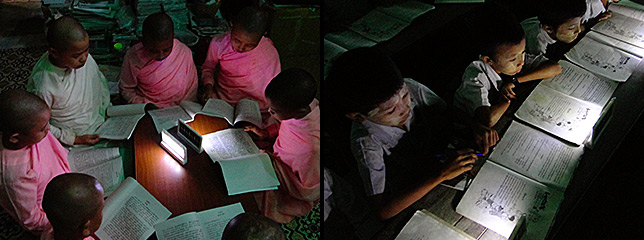
The lights are used for study at night and during power cuts.
Hoshi : Myanmar is experiencing rapid growth as a result of recent changes in economic and political affairs. However, there are still a great number of impoverished people and I think the country has many issues to overcome. What is the current situation of temple schools?
Iwaki : Myanmar currently has two education systems: Public education and temple school education. In contrast to other countries, temple school education is recognized by the government as formal education and the temple schools have exactly the same texts and curricula as public schools.
Hoshi : Why do public schools and temple schools coexist in this way?
Iwaki : Although tuition fees of public schools are not so expensive, a student has to pay for the uniform, desk, chair, and donations. Many families cannot afford that. Another definite problem is that students must bring packed lunches to school. Many poor families can only afford meals for a day with the money they earn from working in the morning. This means they have to send their children to school without packed lunches at the start of the day. Meanwhile, since lunches are provided free of charge at temple schools, they are inundated by prospective students, resulting in a constant shortage of places at temple schools.
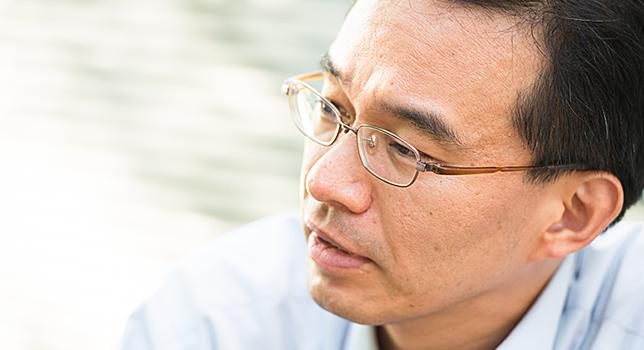
Hoshi : How do the temple schools get their funds?
Iwaki : While public schools receive subsidies from the government, they get funds only from donations to the temples. For this reason, many temple schools are in difficult operating conditions, with the situation being particularly serious in the urban areas, where there are many day laborers and donations are scarce.
Hoshi : But thanks to the temple schools, more people receive education in Myanmar than other developing countries, and the literacy rate is high at over 90%. That is one of the wonderful things about Myanmar.
Iwaki : Indeed. Because temples run the schools, they also provide a firm grounding in moral education. The children there are incredibly strong and cheerful. They don't seem financially disadvantaged at all.
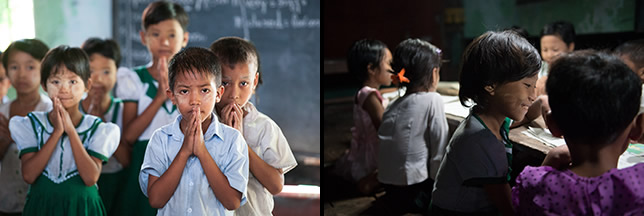
Children are studying hard.
Iwaki : When we held consultations on the solar lanterns, the point was raised that if they were distributed to families free of charge, the lanterns might be sold on because they are worth about equivalent to one month's salary of a civil servant in Myanmar. So, we suggested that the lanterns could be used at temple schools, with some of them put to use in a rental business managed by the temple schools. There are many temple schools that are unable to pay teachers' salary due to lack of donations. We thought that the income from renting out the lanterns might contribute to stabilizing the finances of the temple schools. As another example, I heard there are temple schools that run a battery rental business to earn a monthly income equivalent to about 500 US dollars. I thought this to be an extremely interesting initiative, and wondered if we could organize something similar.
Hoshi : I also heard about the battery rental business during an observation visit I made. I was impressed by the entrepreneur's perspective of the temple priests.
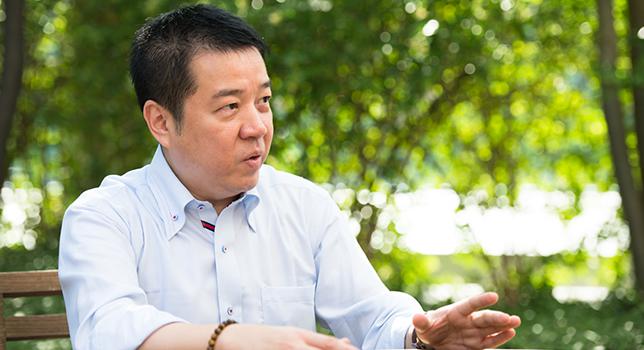
Iwaki : To earn operating funds for temple schools through renting out the lanterns, we set the rental rate of 20 yen per lantern per day in the model business initiative. Since another NGO is already carrying out a similar project, some say it is difficult for temple schools to participate in the initiative as our rate is high. But the high performance of Panasonic products is self-evident once you use them, and you can charge your mobile phone from a lantern via its USB port. In addition the rental fees go to the temple schools as a donation. For these reasons, we are asking people to accept a slightly higher pricing for the rental fees of the lanterns. Come to think of it, I heard a local business is interested in purchasing them.
Hoshi : I'm happy to hear that. Our department is in charge of corporate citizenship activities, and we donate lanterns to partner organizations in order to help them resolve various challenges people who are too poor to buy such lanterns are facing. At the same time, from a business perspective, it is best that people who can afford to buy them do so. To this end, I think it is necessary to set the price of a lantern as affordable as possible.
Iwaki : Rather than just handing over the lanterns, GMI hopes to continue its involvement and go on to make the project self-sustaining. Our temple school project also starts when a school is built. I hope that all the people involved will be committed to this 100 Thousand Solar Lanterns Project.
Hoshi : We hope to witness how the lanterns help people to live a better life. I believe it is incredibly important to encourage people to improve their lives by themselves--to give them ownership of the project. I also believe that the people of Myanmar will make full use of lanterns in this respect.
